No matter the season, Santa Rita prickly pear adds a variety of colors to the desert garden, along with great texture, thanks to its paddle-shaped pads. As winter approaches, a truly wondrous transformation takes place: The edges of the gray-blue pads take on a purple tinge. The purple pads aren’t the only trick that this prickly pear has up its sleeve — with the appearance of spring, bright yellow flowers appear on the tips of the pads.
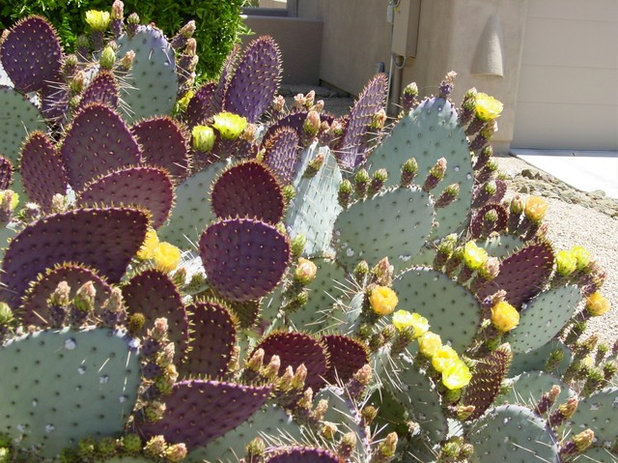
Noelle Johnson Landscape Consulting
Botanical name: Opuntia santa-rita or
Opuntia violacea santa-ritaCommon names: Santa Rita prickly pear, purple prickly pear
Origin: Native to Arizona, New Mexico and Texas and south through Chihuahua, Mexico
Where it will grow: Hardy to 15 degrees Fahrenheit (USDA zone 8; find your zone)
Water requirement: Low
Light requirement: Full sun
Mature size: 2 to 5 feet tall and wide
Benefits and tolerances: Extremely drought tolerant
Seasonal interest: Purple-tinged pads in winter, yellow flowers in spring and gray-green pads throughout the rest of the year
When to plant: Spring or fall
Shown: Santa Rita prickly pear in flower
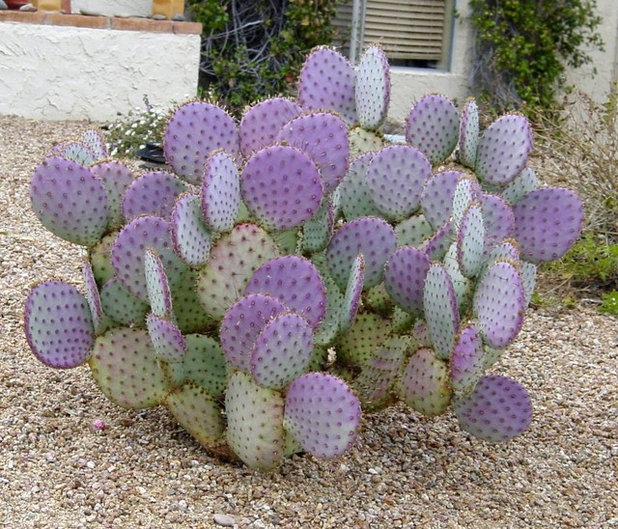
Noelle Johnson Landscape Consulting
Distinguishing traits. With its distinctive purple coloring, it is easy to see why Santa Rita prickly pear is one of the most popular prickly pear species for Southwestern gardens.
The purple intensifies in response to cold temperatures and drought conditions. Once warmer weather arrives, the purple coloring will fade, changing to a blue-gray color that contrasts beautifully with plants that have darker foliage.
Older specimens will often retain their purple coloring throughout the year.
Shown: Santa Rita prickly pear in winter
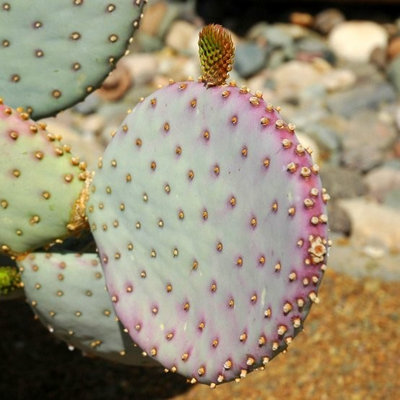
Noelle Johnson Landscape Consulting
The pads grow up to 8 inches long and are covered with small clusters of tiny bristles called glochids. These glochids are quite irritating if you brush against them with your bare skin. Occasionally long spines can be found toward the top of the plant.
The bristly glochids will ruin any gardening gloves. Instead use tongs or multiple layers of newspaper to handle this cactus. If you do suffer the misfortune of having the tiny bristles stuck in your skin, spread regular white school glue on the area, allow it to dry and peel it off, which should help dislodge the bristles. You can also try using duct tape to pull out the tiny glochids.
Shown: A new pad growing on a Santa Rita prickly pear
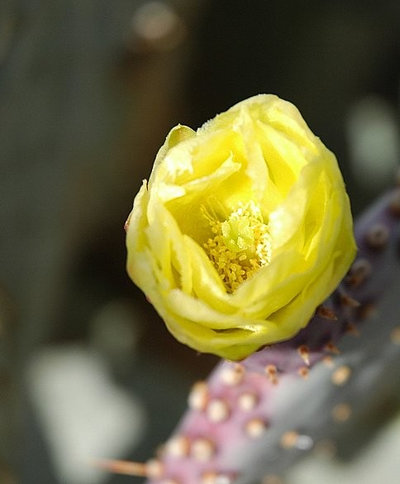
Noelle Johnson Landscape Consulting
In late spring the purple-shaded pads are transformed by the appearance of bright yellow flowers that cover the cactus with welcome springtime color.
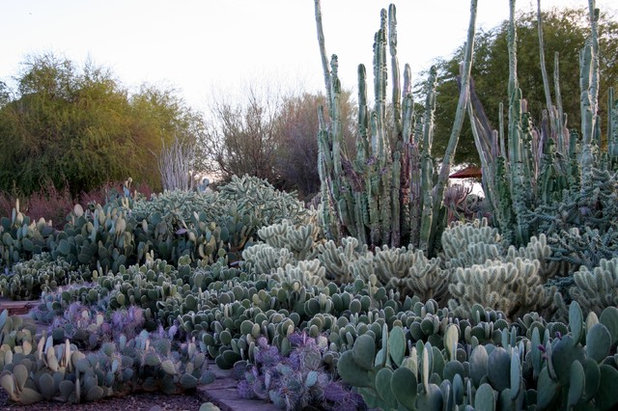
Santa Rita prickly pear is often confused with
Opuntia macrocentra, also known as
black-spine or
purple prickly pear.
Opuntia macrocentra has a few different characteristics, such as a larger amount of long spines, a smaller growth habit and a yellow flower with an orange center.
Shown: Black-spine prickly pear (foreground)
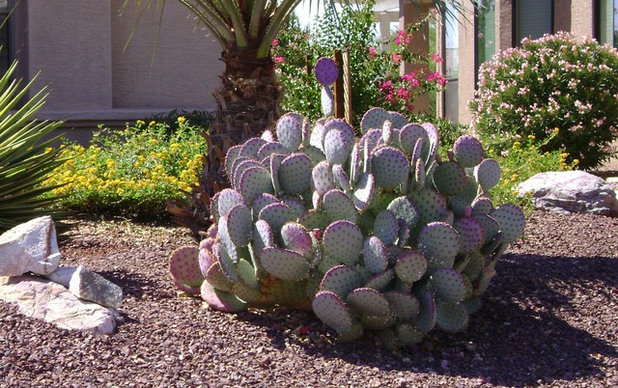
Noelle Johnson Landscape Consulting
How to use it. Show off the plant’s unique shape and color by pairing it with spiky accent plants, such as
green desert spoon (
Dasylirion acrotriche)
or a darker green agave species, like
cow’s horn (
Agave bovicornuta)
.Drought-tolerant, flowering ground covers will add beauty at a lower level when planted near Santa Rita prickly pear. The flowers of angelita daisy,
blackfoot daisy (
Melampodium leucanthum), damianita and
verbena (
Glandularia spp)
will contrast beautifully with its light gray pads.
When deciding where to plant this cactus, take care to keep it away from pathways or other areas where people can inadvertently get pricked by the glochids.
Shown: Santa Rita prickly pear in a summer landscape
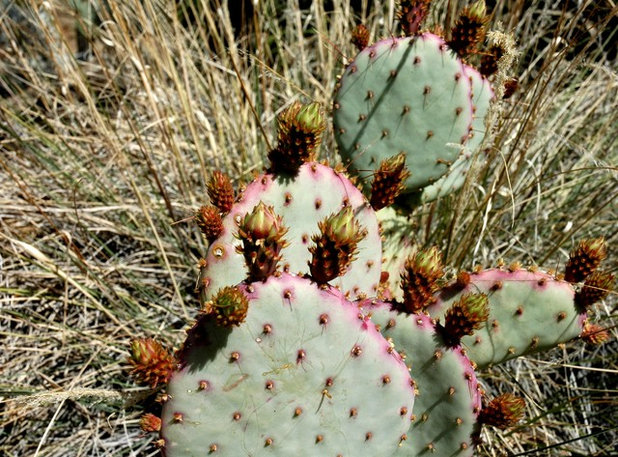
Noelle Johnson Landscape Consulting
Planting notes. Plant it in well-drained soil in a location that receives full sun. Plant it in spring, when the danger of frost has passed, or in early fall.
Do not water it for the first month after planting. During the first summer, water it twice a month to help encourage root growth. Afterward it should be able to survive on rainfall alone. Additional water can be provided to establish it if the pads begin to shrivel, but no more than once a month in winter and twice a month in summer.
Shown: The flower buds
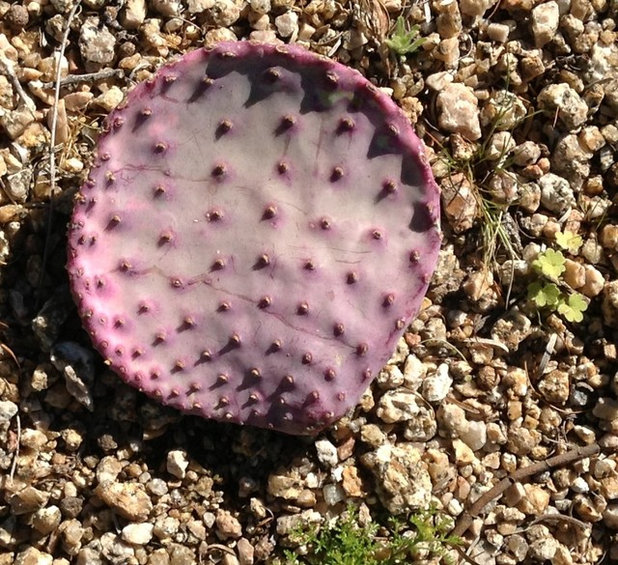
Noelle Johnson Landscape Consulting
You can find Santa Rita prickly pear in many nurseries that carry desert cacti. However, you can easily propagate it by planting one to three pads from a plant. To do this:
- Cut the pads off at the joint where they attach.
- Place the newly cut pads in a dry, shady spot for one to two weeks to allow the cut ends to dry, which will prevent rotting after they’re planted.
- Plant the new pads so that the bottom one-third is buried, and care for them as you would a new plant from the nursery.
Shown: A single pad, ready to be planted
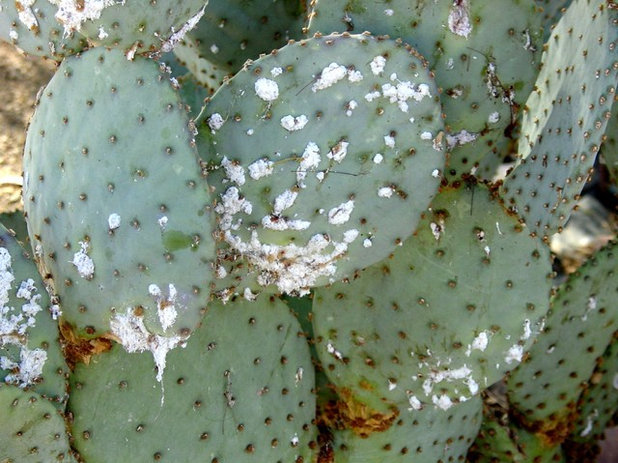
Noelle Johnson Landscape Consulting
Occasionally white, cottony spots may cover parts of your the pads. This is caused by cochineal insects, which are scale bugs. To get rid of them, simply spray them off with a strong jet of water.
Shown: Cochineal spots





